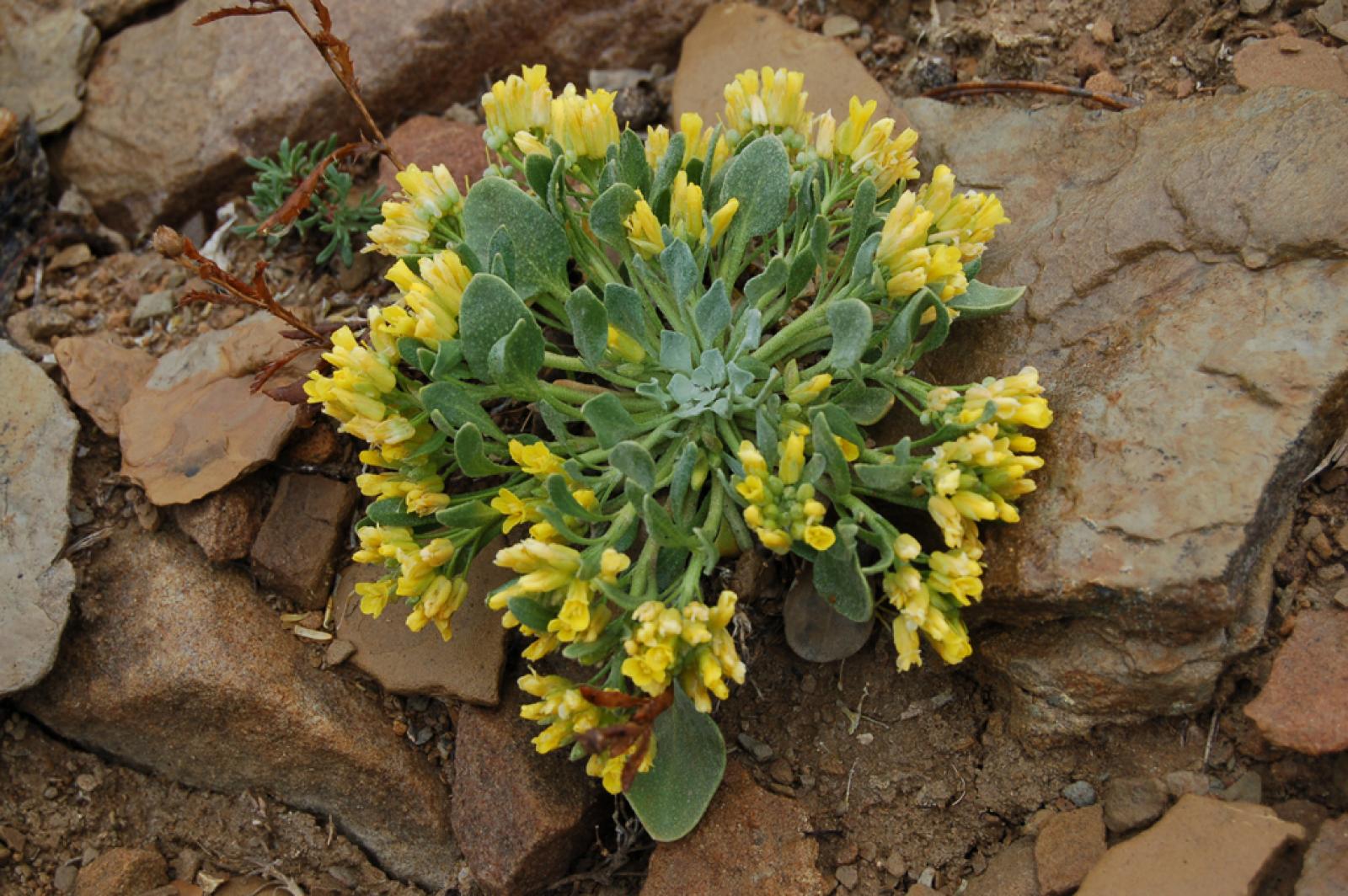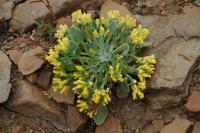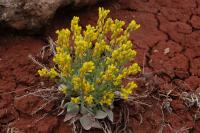Perennials; caudex branched, (sometimes forming a thick crown, cespitose); (silvery) pub-escent throughout, trichomes several-rayed, rays furcate, (moderately tuberculate, rays weakly so). Stems several from base, usually somewhat decumbent, (unbranched), (0.4-)0.5-2 dm. Basal leaves: (petiole slender, often narrowly winged); blade obovate to orbicular or rhombic-orbicular, 2-9 cm, (base abruptly narrowed to petiole), margins usually entire, rarely with few scattered teeth, (apex rounded or obtuse, sometimes with apical mucro). Cauline leaves: blade spatulate to oblanceolate, 1-3 cm, margins entire, (apex usually obtuse). Racemes loose, (elongated in fruit). Fruiting pedicels (divaricate, slightly sigmoid or nearly straight), 6-12 mm. Flowers: sepals linear-oblong, 4-7.5 mm; petals spatulate, 6-11 mm. Fruits (erect), didymous, suborbicular, inflated, (4-)6-15 × (4-)8-20 mm, (papery, basal and apical sinuses similar, basal rarely shallower, apical deep, narrow and closed or nearly so); valves retaining seeds after dehiscence, pubescent, trichomes appressed; replum oblong, constricted, 2-3.5 mm, narrower than fruit, apex obtuse; ovules (2 or) 4 per ovary; style 4-6(-9) mm. Seeds (dark brown), flattened, (2-3 mm). 2n = 10, 16, 24.
Flowering May-Jun(-Jul). Hillsides, roadcuts, sagebrush, pinyon-juniper, Gambel oak, ponderosa pine communities; 1500-3500 m; Ariz., Colo., Idaho, Mont., Nev., N.Mex., S.Dak., Utah, Wyo.
Physaria acutifolia tends to be somewhat dwarfed, with a branched caudex and especially long styles (var. stylosa), where it grows at high elevations, especially at the western end of the Uinta Mountains in Utah. Intermediates form an uninterrupted cline and no infraspecific taxa are here recognized. In R. C. Rollins (1939), the discussion of P. acutifolia actually pertains to P. rollinsii. The discussion of P. australis pertains to what is now known as P. acutifolia. The plants are usually found in open soil patches, rarely into the subalpine or alpine tundra.





